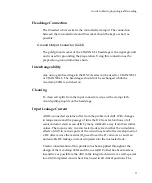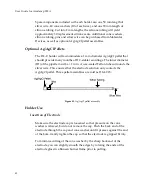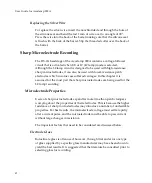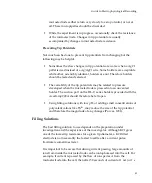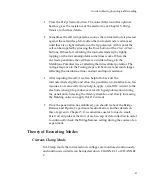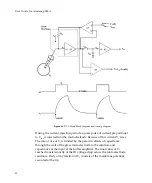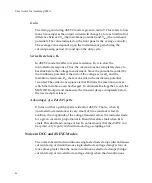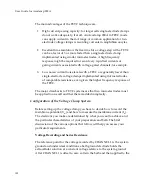
Guide
to
Electrophysiological
Recording
microelectrodes
either
return
very
slowly
to
zero
potential,
or
not
at
all.
These
micropipettes
should
be
discarded.
While
the
experiment
is
in
progress,
occasionally
check
the
resistance
of
the
microelectrode.
Changes
in
tip
potential
are
usually
accompanied
by
changes
in
microelectrode
resistance.
Preventing
Tip
Potentials
Not
much
can
be
done
to
prevent
tip
potentials
from
changing
but
the
following
may
be
helpful.
Sometimes
the
slow
changes
in
tip
potentials
are
worse
when
a
AgCl
pellet
is
used
instead
of
a
Ag/AgCl
wire.
Some
holders
are
acceptable
while
other,
ostensibly
identical,
holders
are
not.
Therefore
holders
should
be
tested
and
selected.
The
variability
of
the
tip
potentials
may
be
related
to
pressure
developed
when
the
microelectrode
is
pressed
into
an
unvented
holder.
The
suction
port
on
the
HL
‐
U
series
holders
provided
with
the
Axoclamp
900A
should
therefore
be
left
open.
Using
filling
solutions
with
low
pH,
or
adding
small
concentrations
of
polyvalent
cations
like
Th
4+
,
may
reduce
the
size
of
the
tip
potential
and
therefore
the
magnitude
of
any
changes
(Purves,
1981).
Filling
Solutions
The
best
filling
solution
to
use
depends
on
the
preparation
under
investigation
and
the
experience
of
the
investigator.
Although
KCl
gives
one
of
the
lowest
tip
resistances
for
a
given
tip
diameter,
a
KCl
‐
filled
electrode
is
not
necessarily
the
fastest
to
settle
after
a
current
pulse;
K
‐
citrate
is
sometimes
faster.
It
is
important
to
be
aware
that
during
current
passing,
large
amounts
of
ions
from
inside
the
microelectrode
can
be
iontophoresed
into
the
cell.
For
example,
if
current
is
passed
by
the
flow
of
ion
species
A
from
the
microelectrode
into
the
cell,
then
after
50
seconds
of
current
at
1
nA
(or
1
s
85







